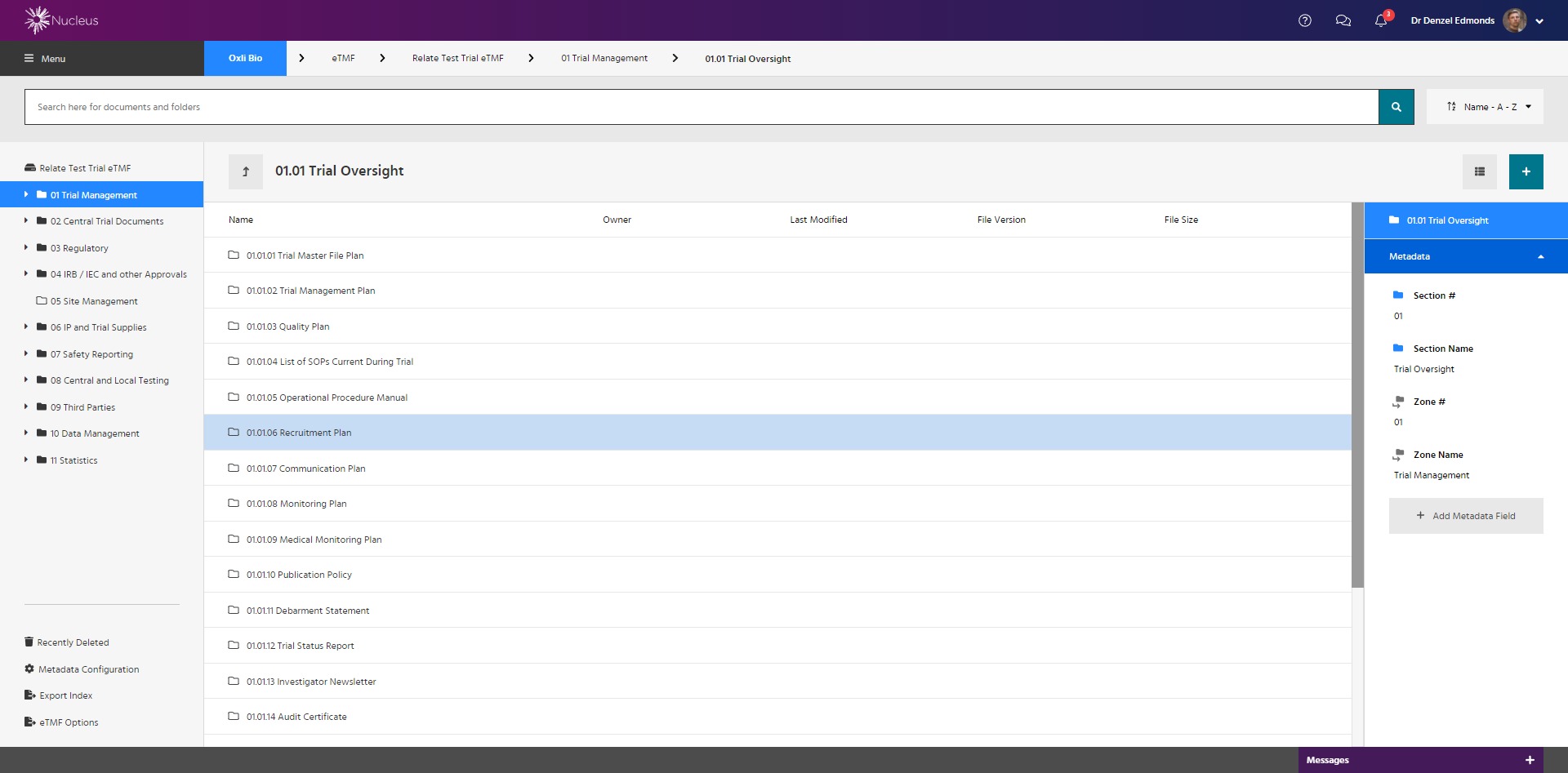
Nucleus' eTMF module is a full document management system, complete with versioning, metadata and collaboration tools.
Case Study
As the Senior UX Designer at Datatrial, I was responsible for overseeing and managing all aspects related to the UI design and UX processes at the company. I was fully responsible for Nucleus, a revolutionary product that provided end-to-end access to clinical data and documents via a single compliant platform. I worked on Nucleus from its initial inception in 2016 and continue to consult on the project to this day.
During my time at Datatrial, I implemented an effective user experience workflow that improved the quality of their products and resulted in happier, more engaged users as a result.
All individual modules within Nucleus received personas based on information gathered from face-to-face focus groups and user interviews. Initial design prototypes were then created in Figma before they were shown to both existing customers and potential clients, undergoing rounds of usability testing to ensure the basic flow made sense to those who’ll use it daily. Once the necessary design and development tasks had been completed, our regular usability testing sessions provided the wider team with an opportunity to observe the release version of the software being used by our actual customers. These sessions - organised and conducted by myself and my team - became an invaluable source of feedback that has resulted in products our clients love to use.
Since joining the team in 2016, Datatrial went on to win two awards for Nucleus in both 2017 and 2018 respectively. At both events, the UX team were given a special mention for their essential work, something I take great pride in as the lead of the department.

Nucleus' eTMF module is a full document management system, complete with versioning, metadata and collaboration tools.
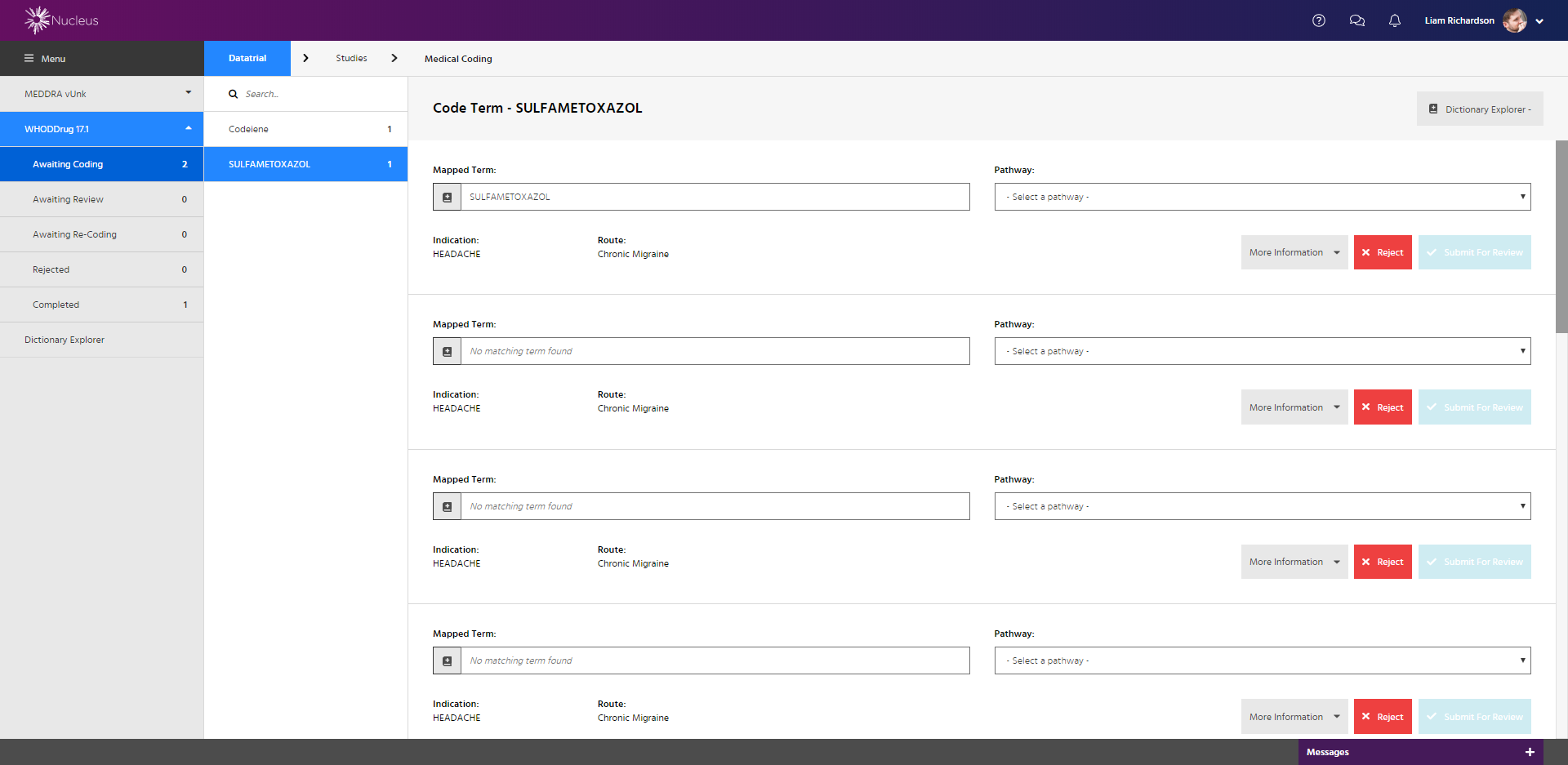
The Medical Coding module scanned data added to our EDC system and returned any terms that were not included within the two most commonly used medical dictionaries. Users were prompted to manually select the correct term to ensure that all data was clean and compliant.
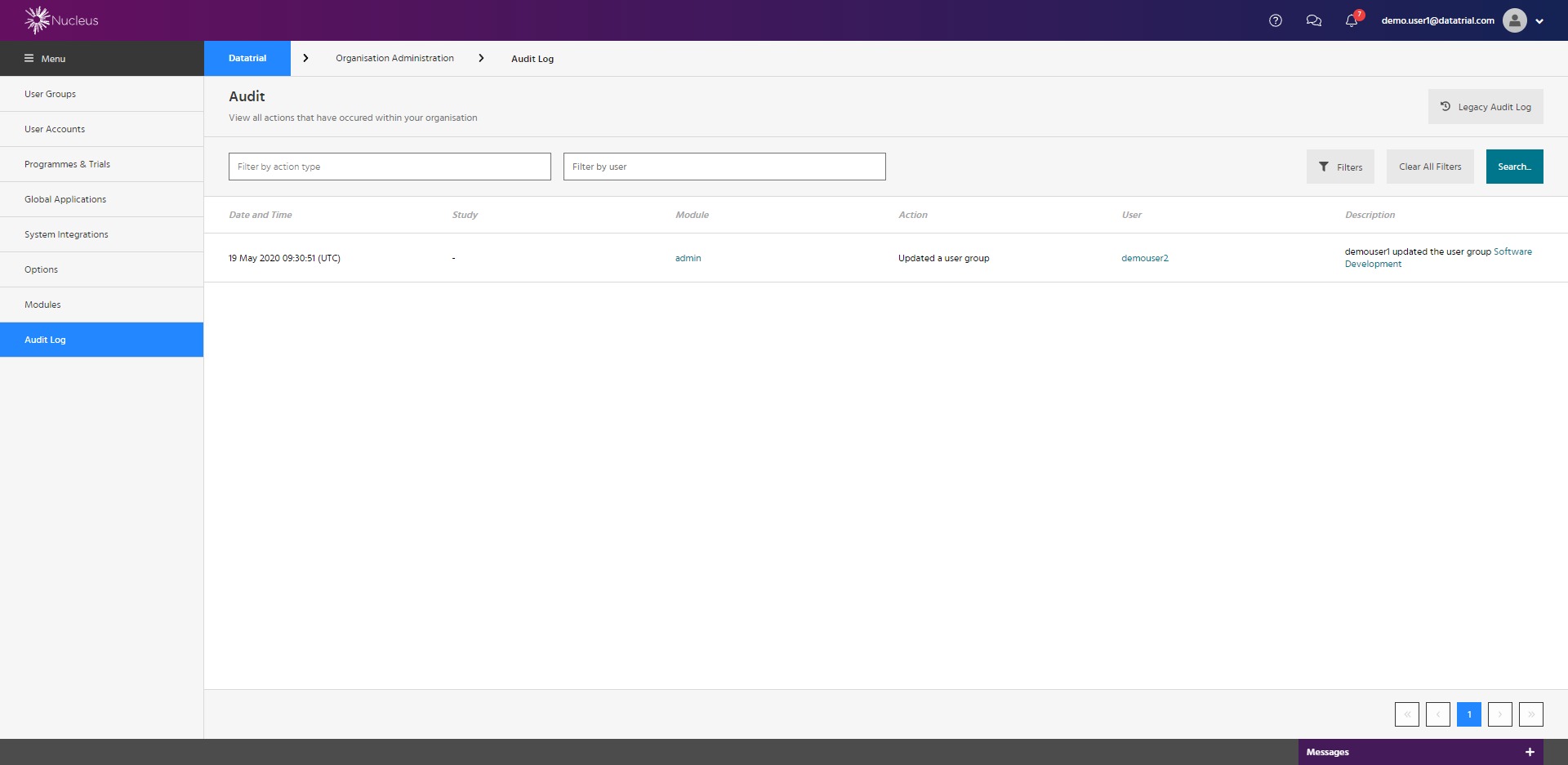
Medical software is held to the same safety standards as every other aspect of medical care. Every action performed using Nucleus was logged for auditing purposes.
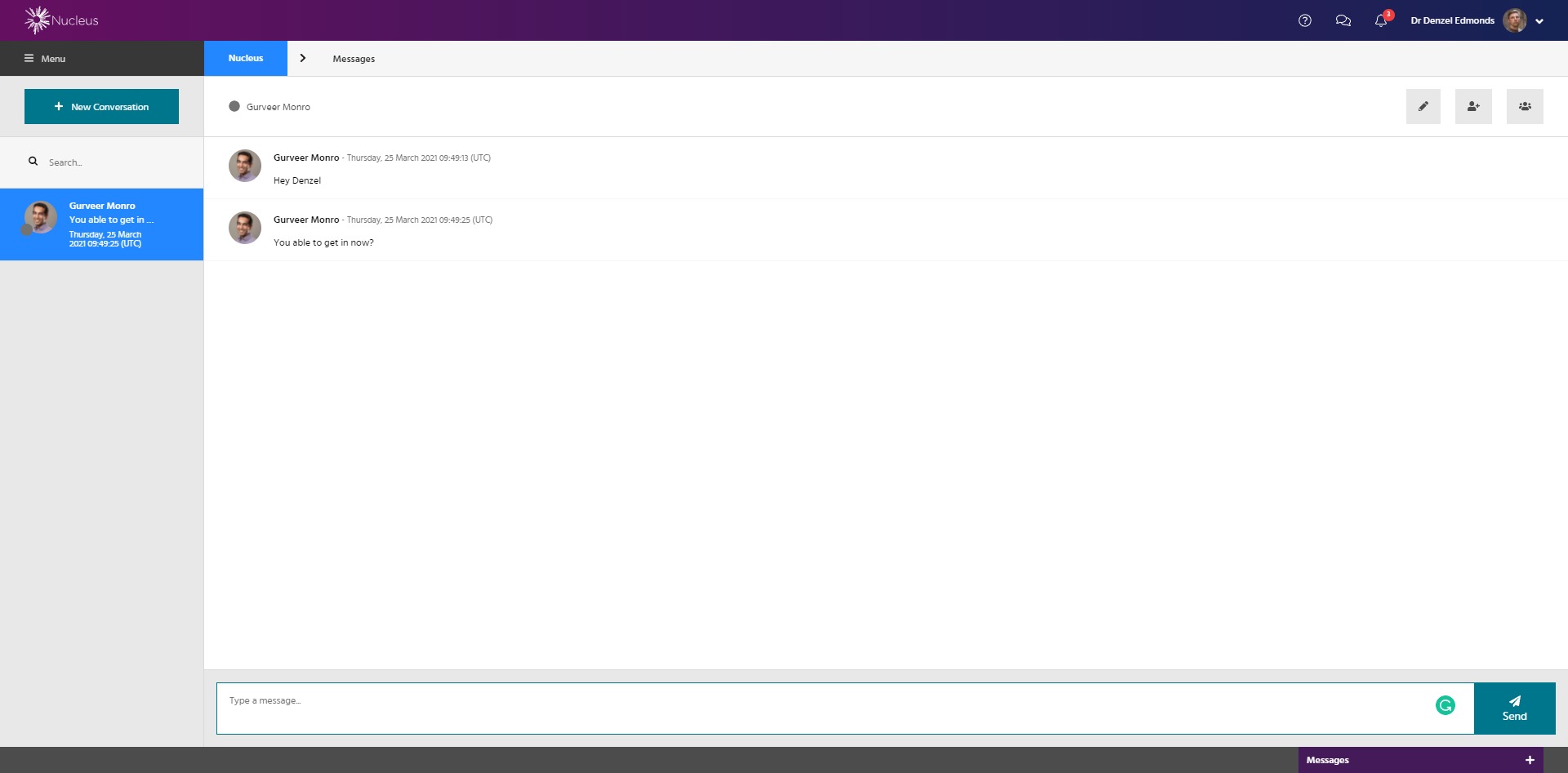
Nucleus contained a real-time messaging function that allowed users to collaborate within the software.
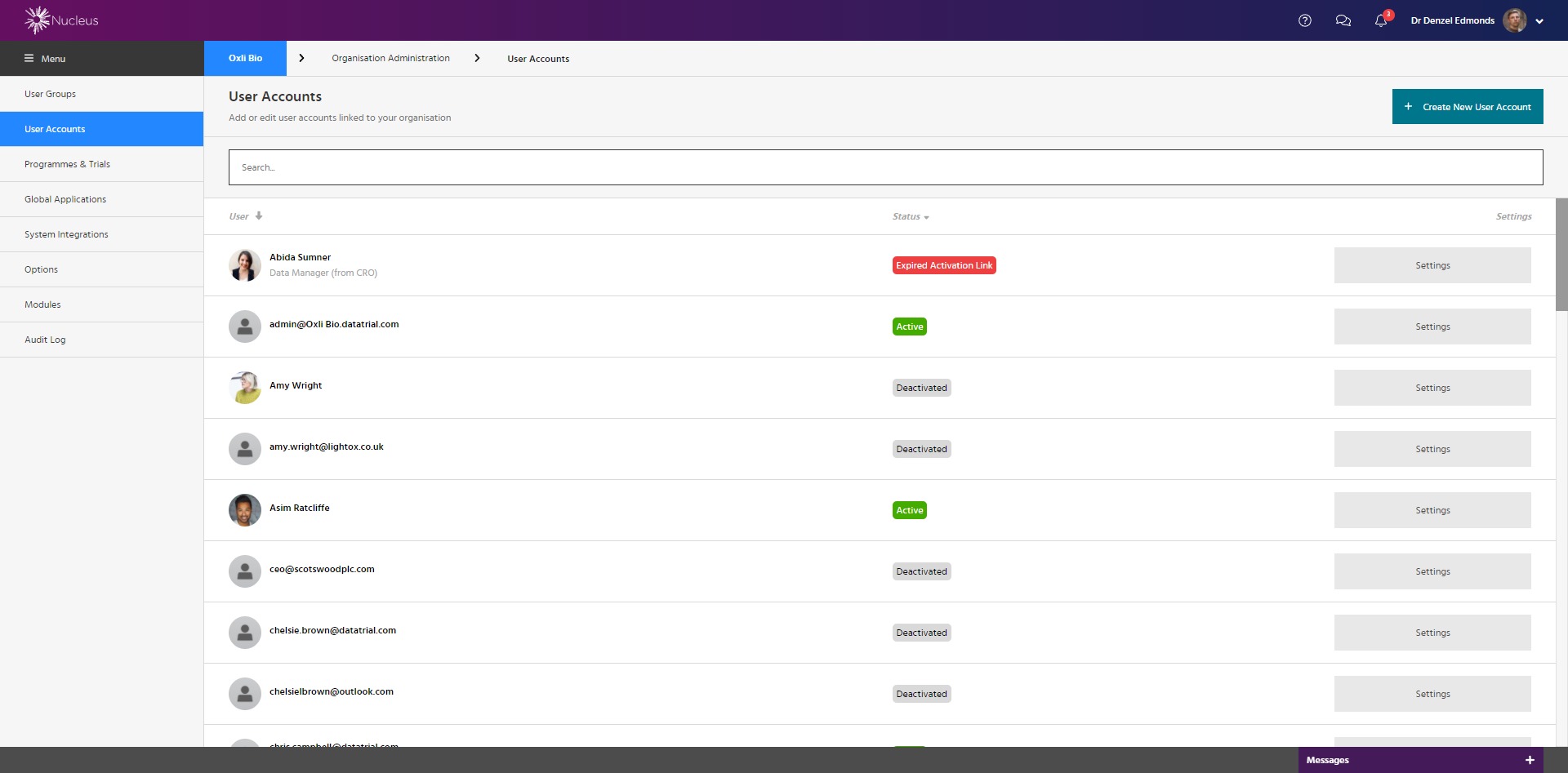
Nucleus was a platform that allowed users from different departments to access specific modules related to their jobs. Nucleus supported groups with individual permissions, a difficult area to design that required multiple revisions to get right.

Nucleus supported multiple organisations which each contained multiple modules. Most medical professionals in the late 2010s were still required to use aging laptops with outdated operating systems, requiring a system that looked modern but still functioned correctly on archaic hardware.